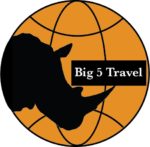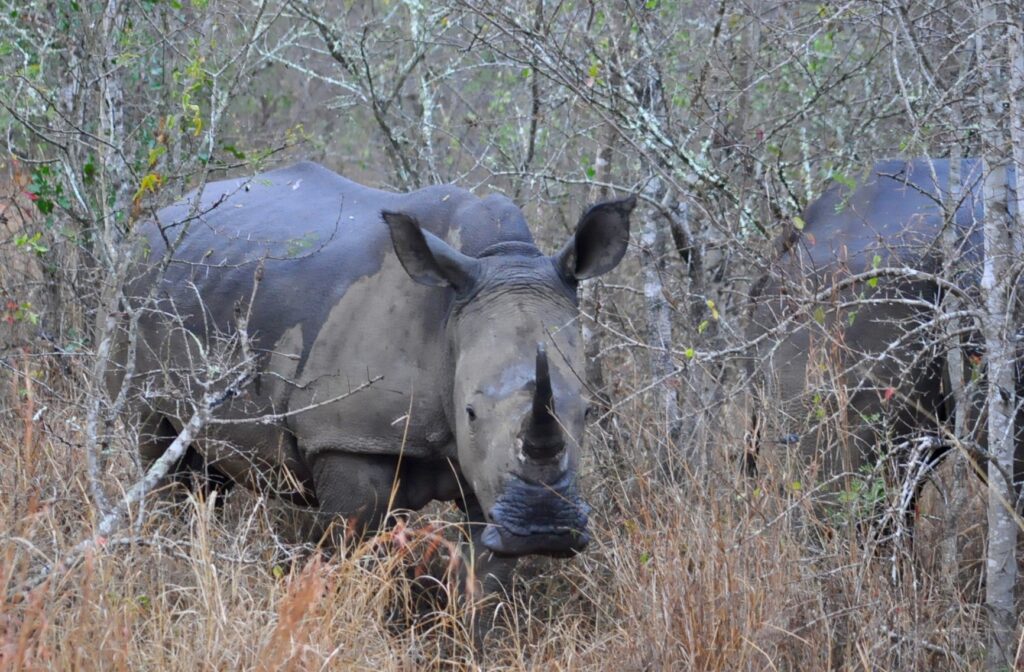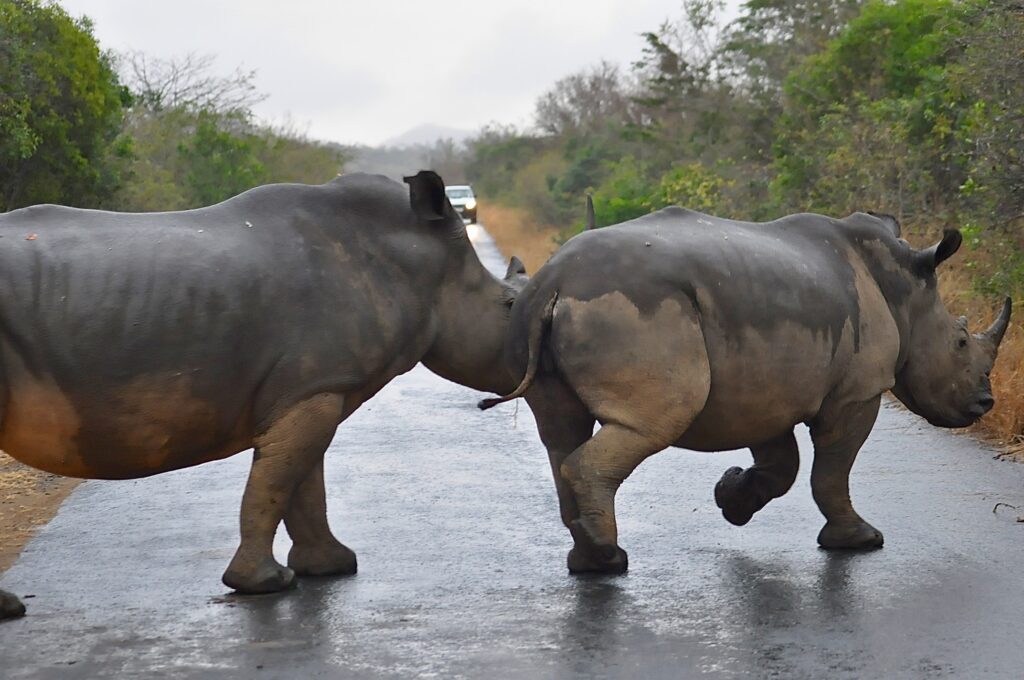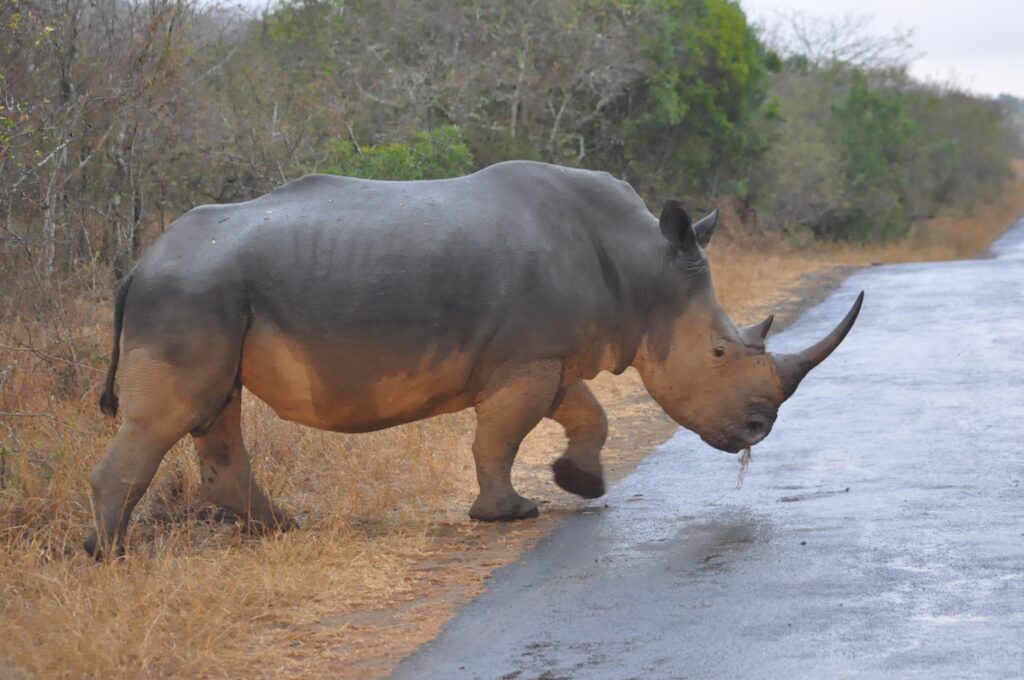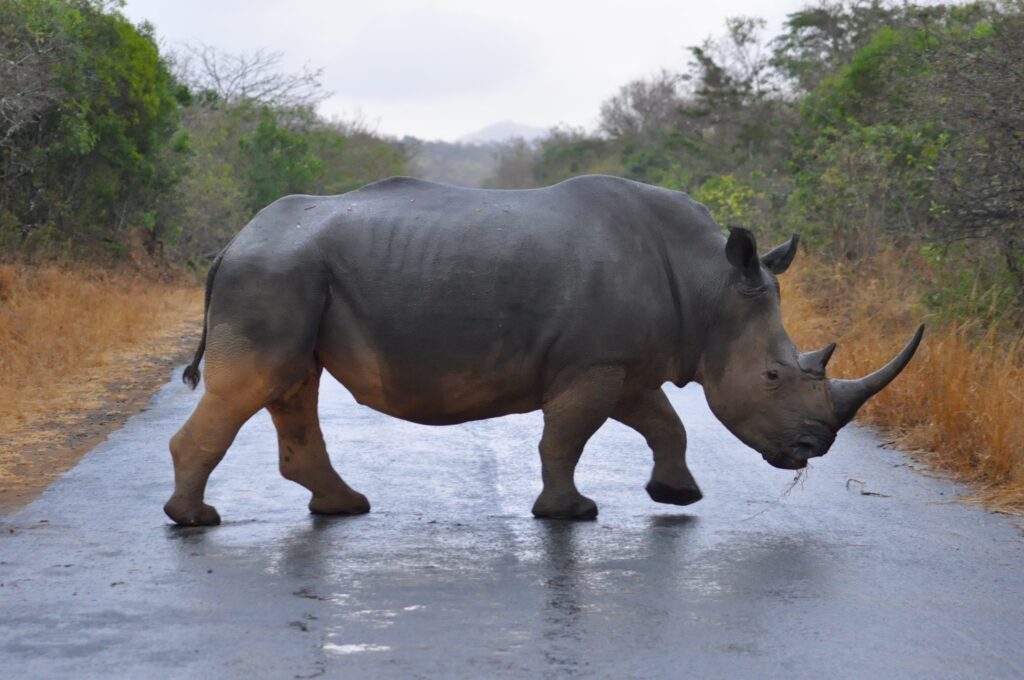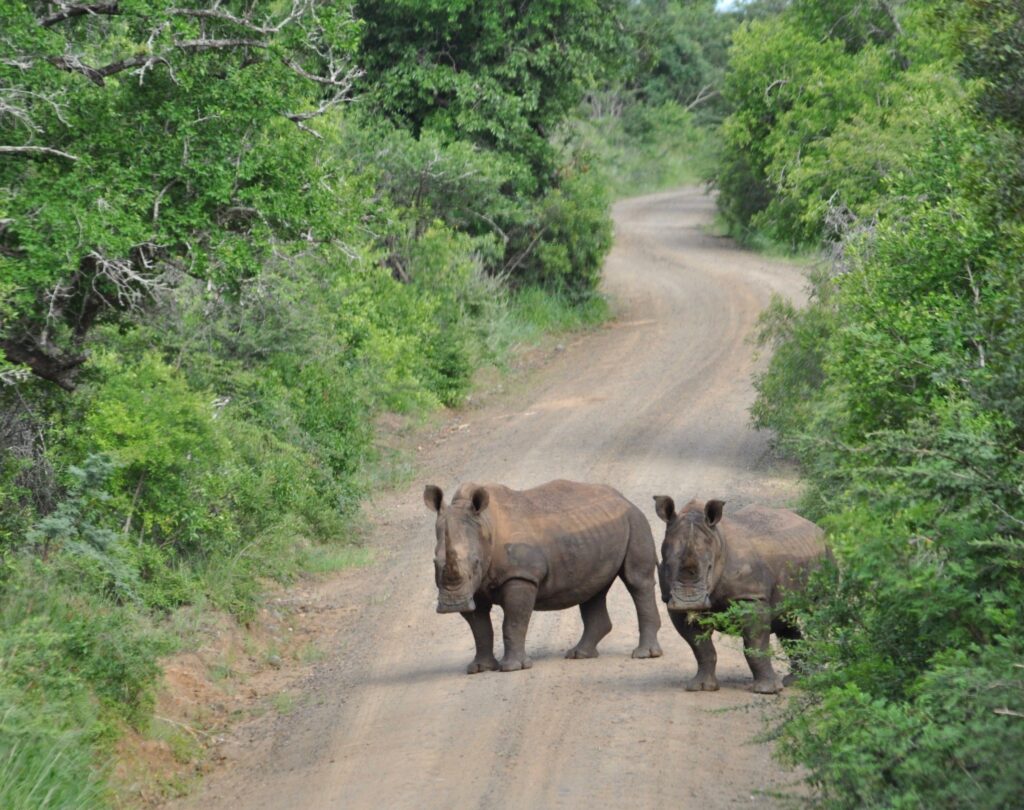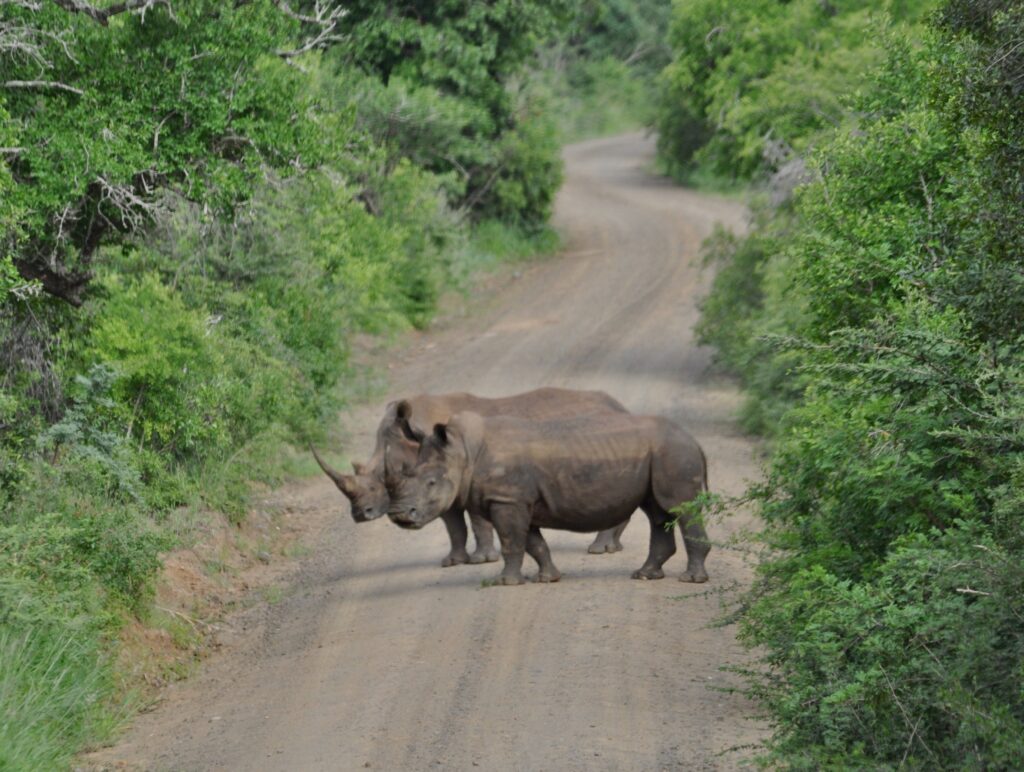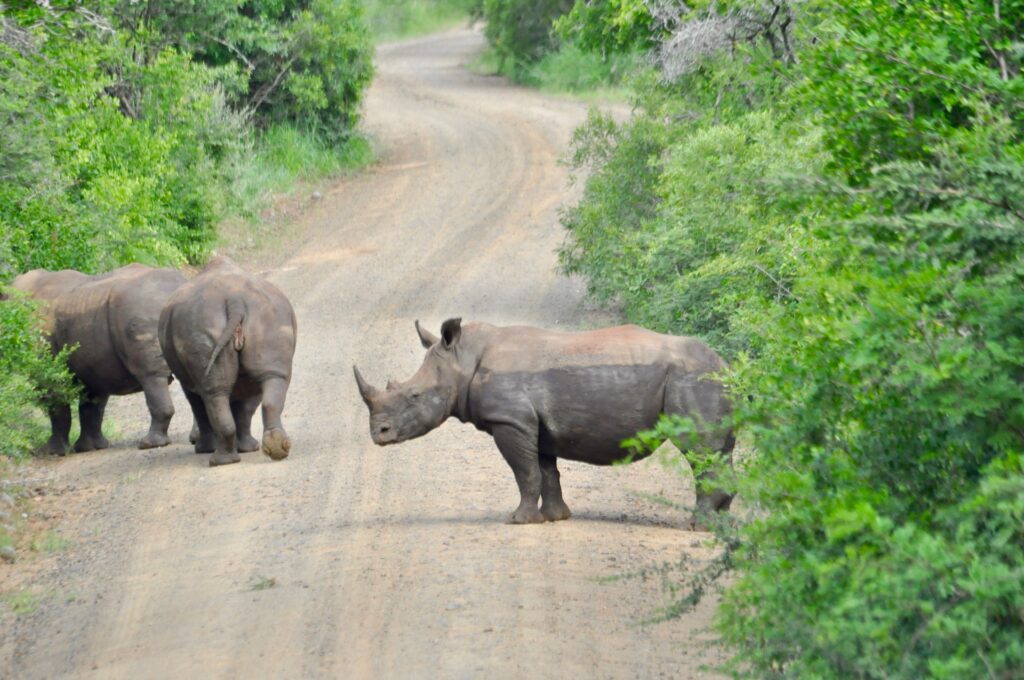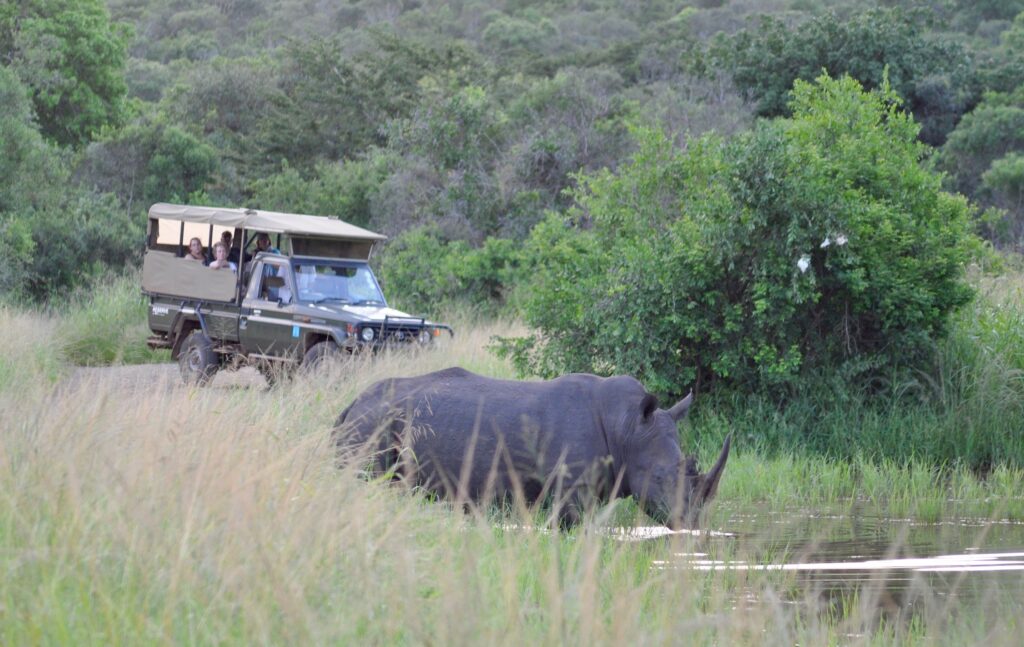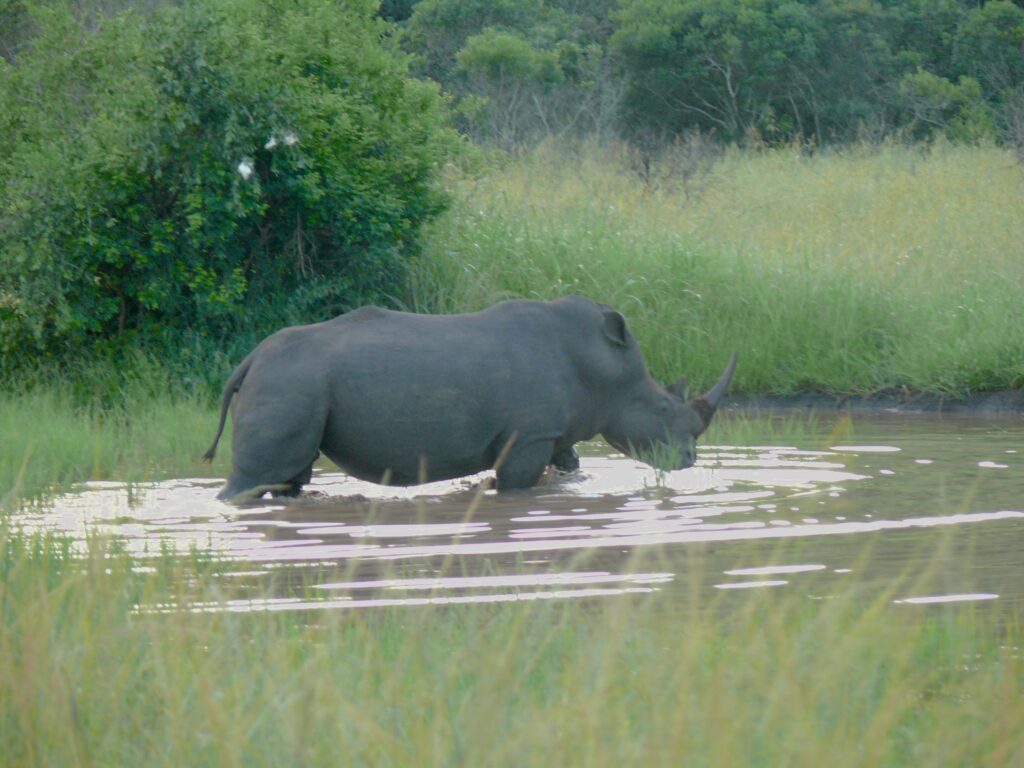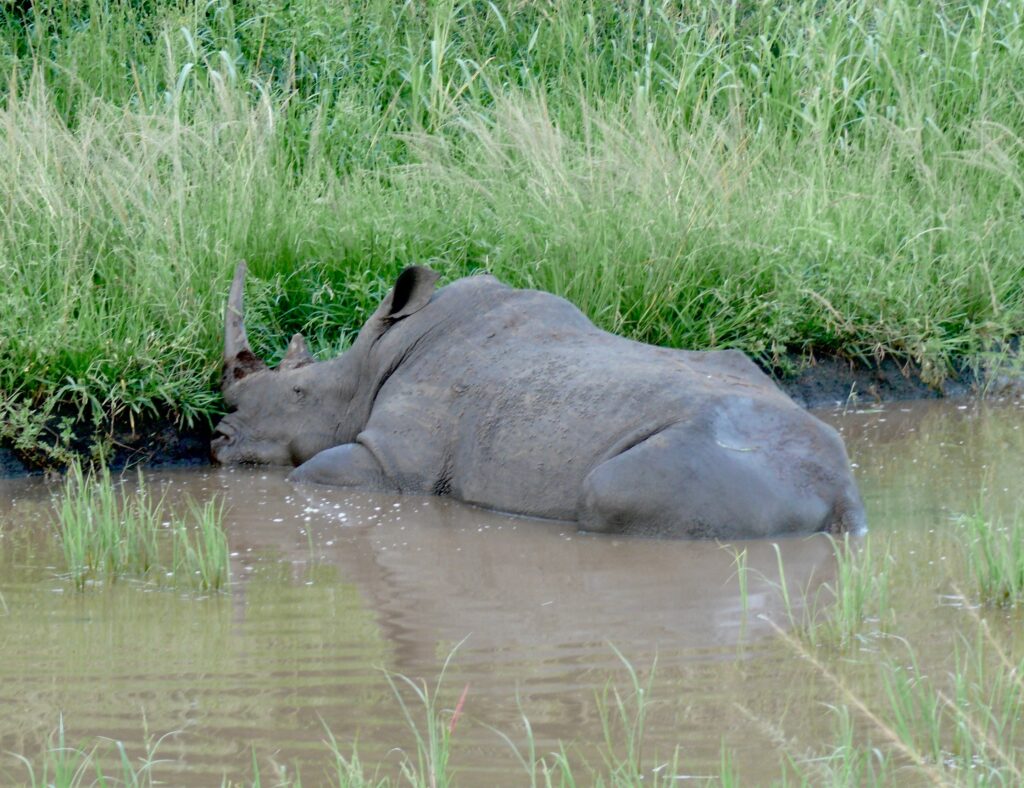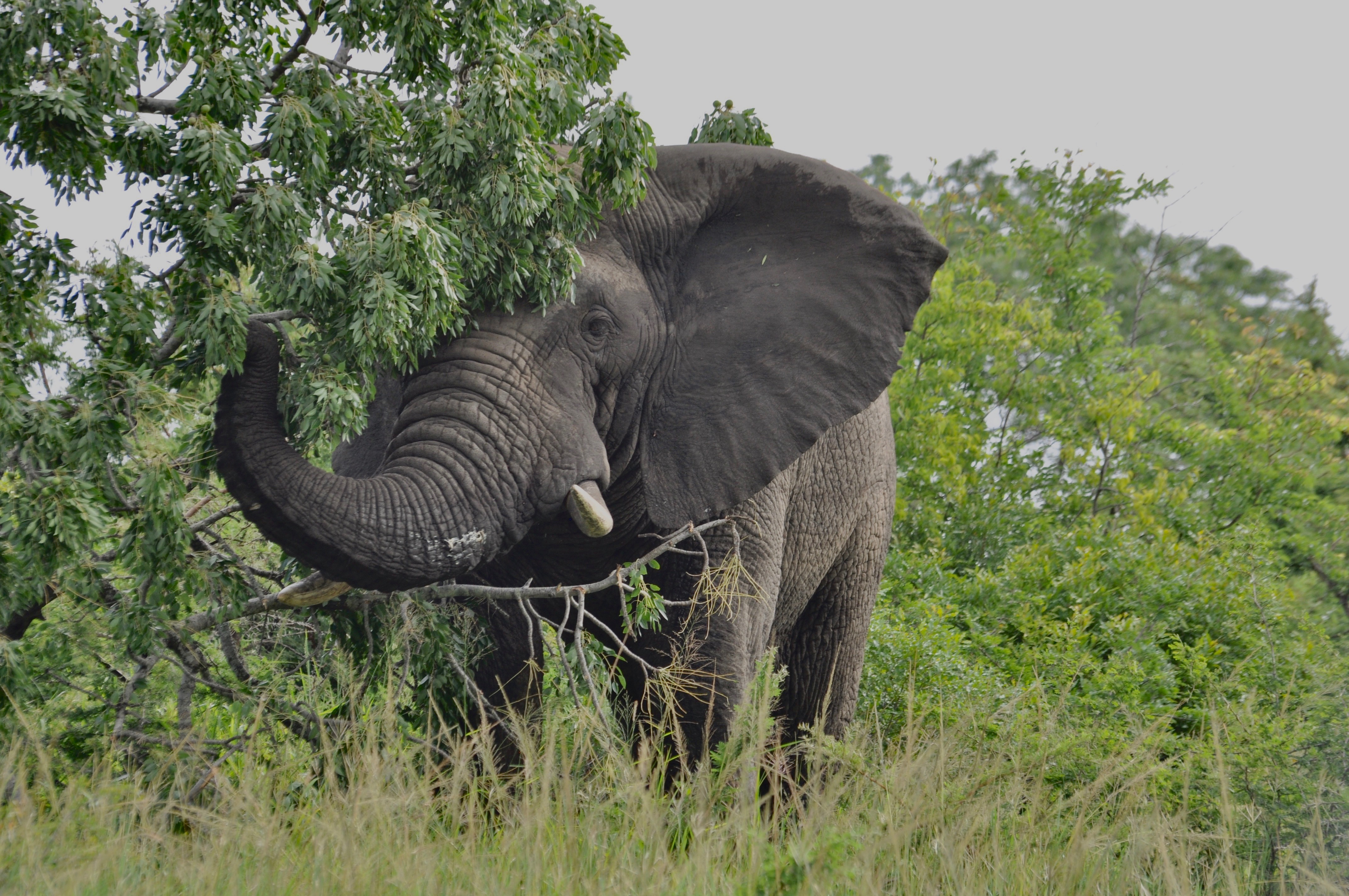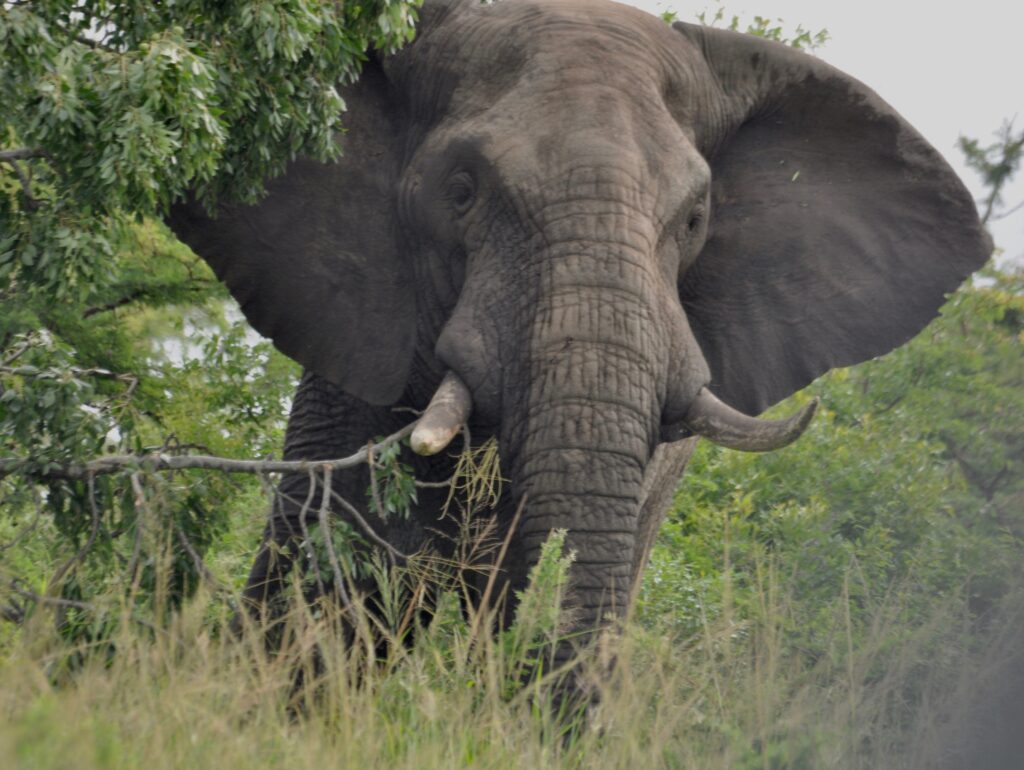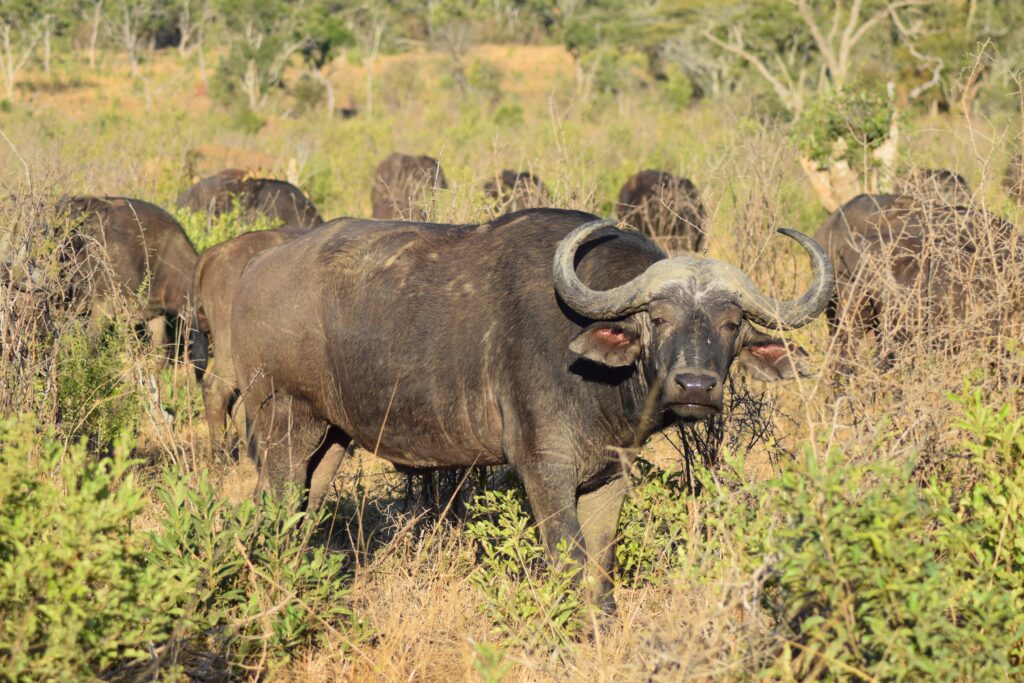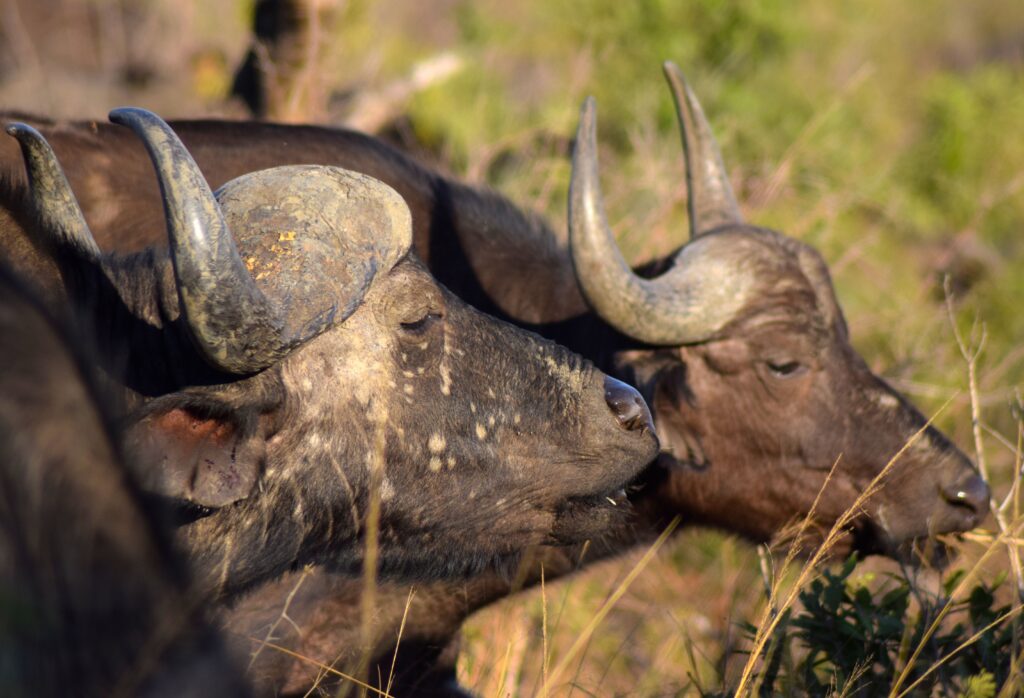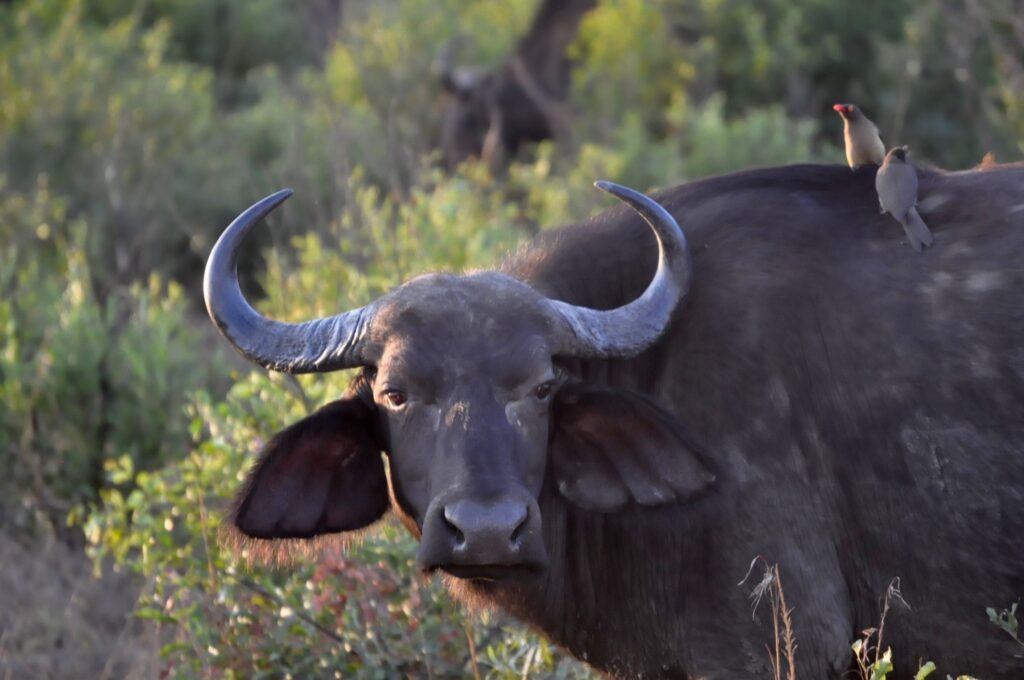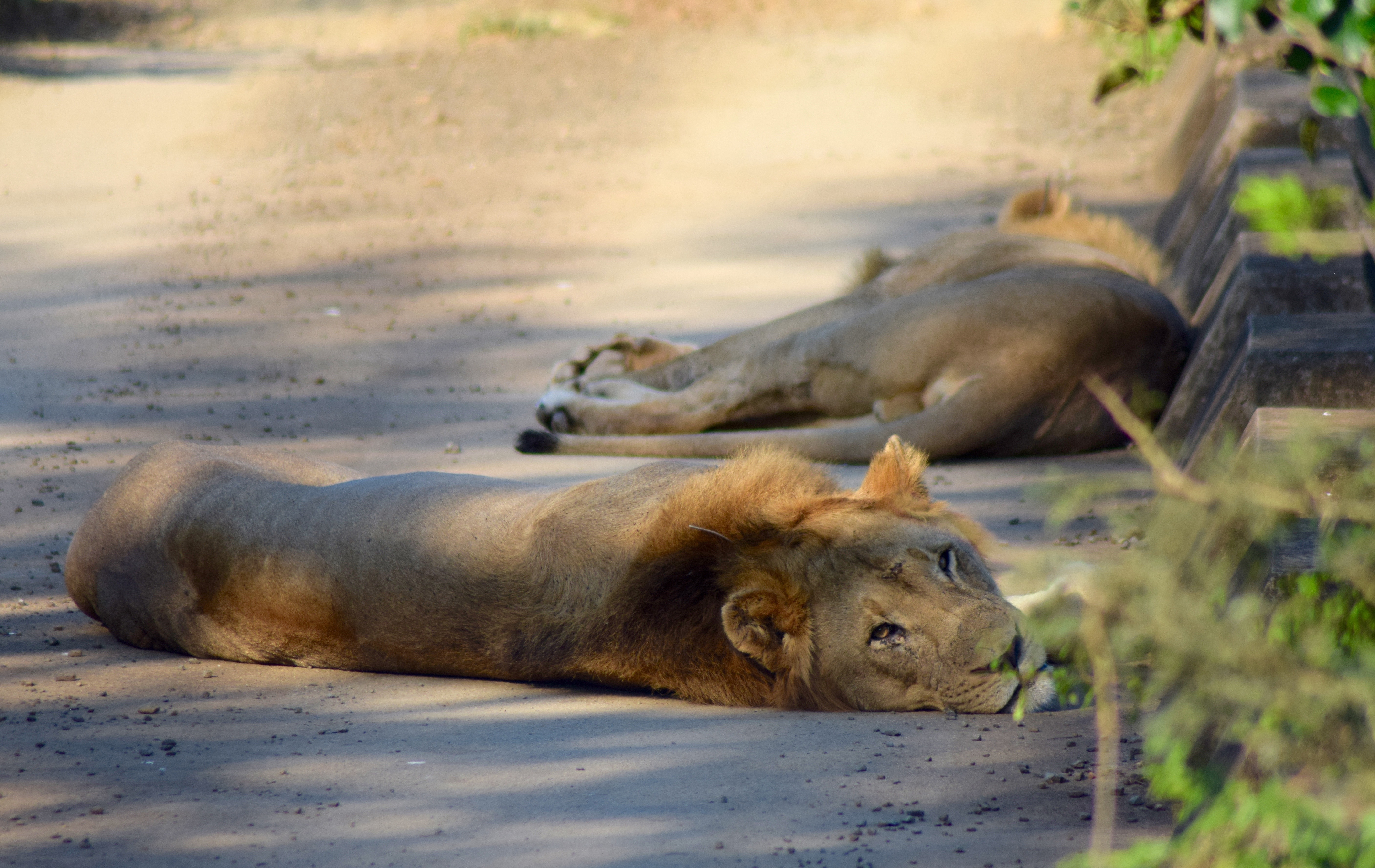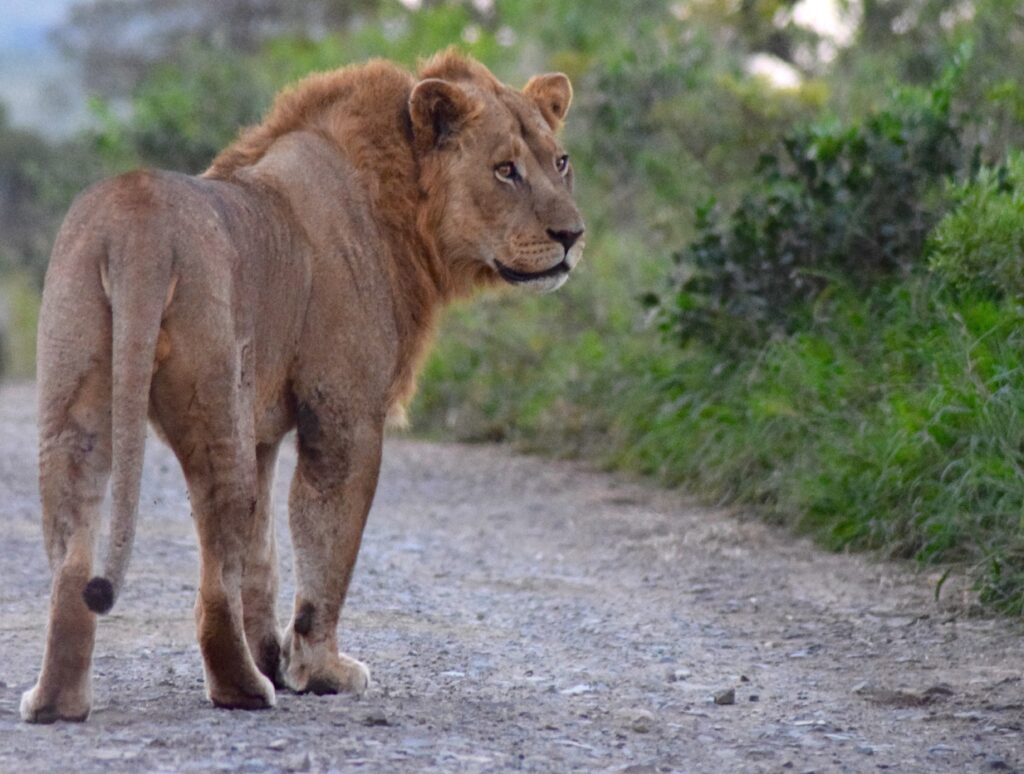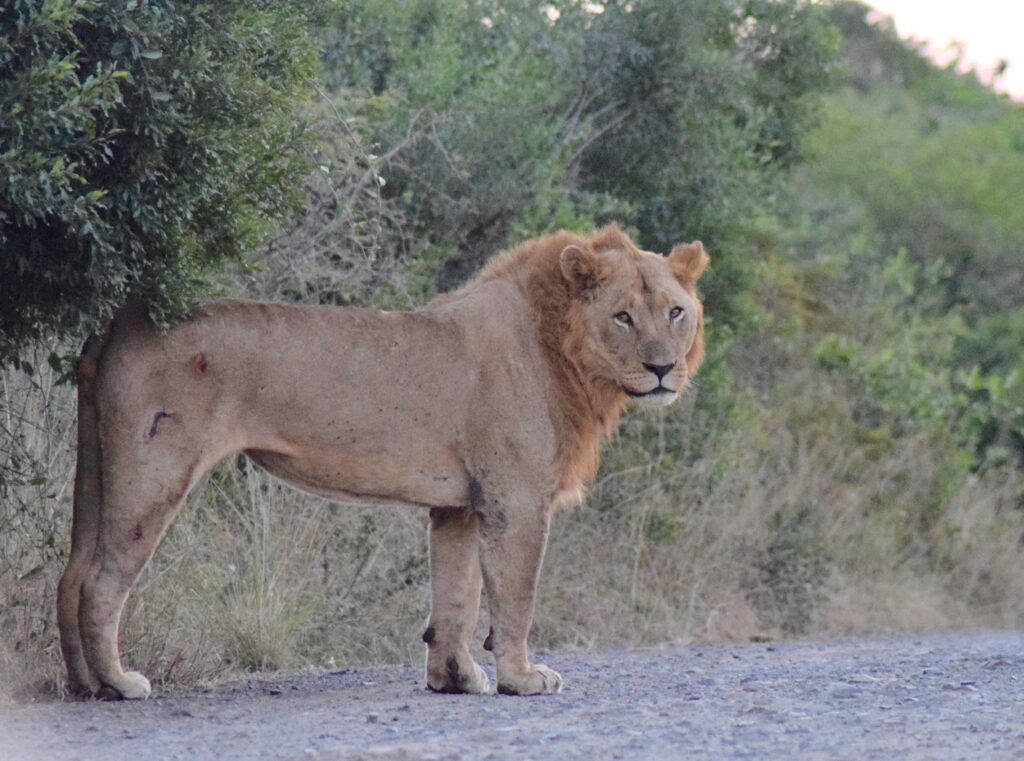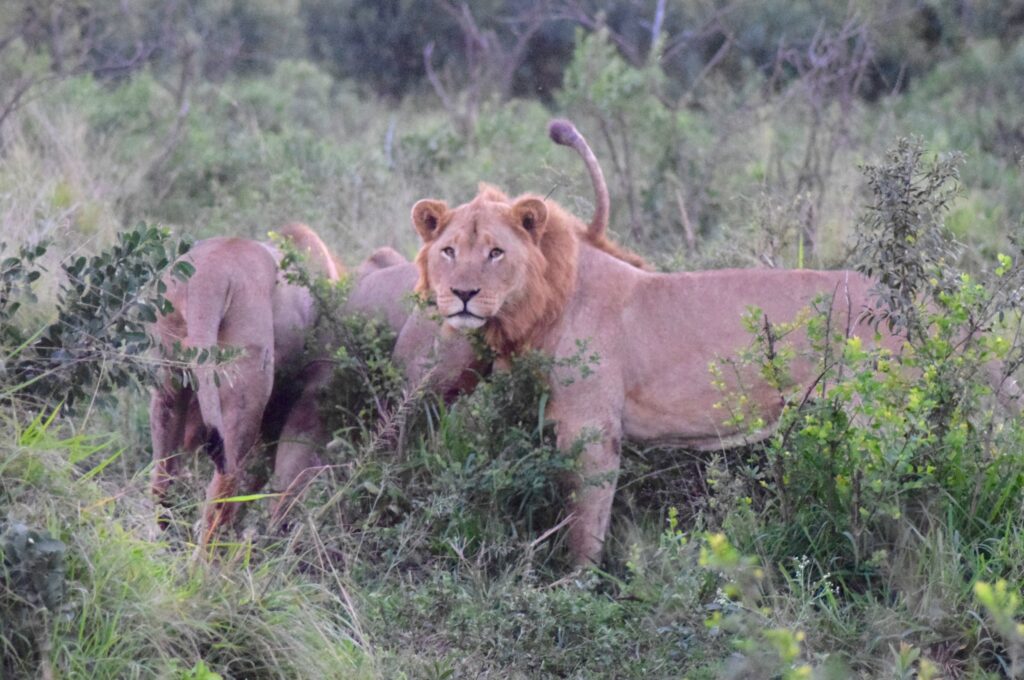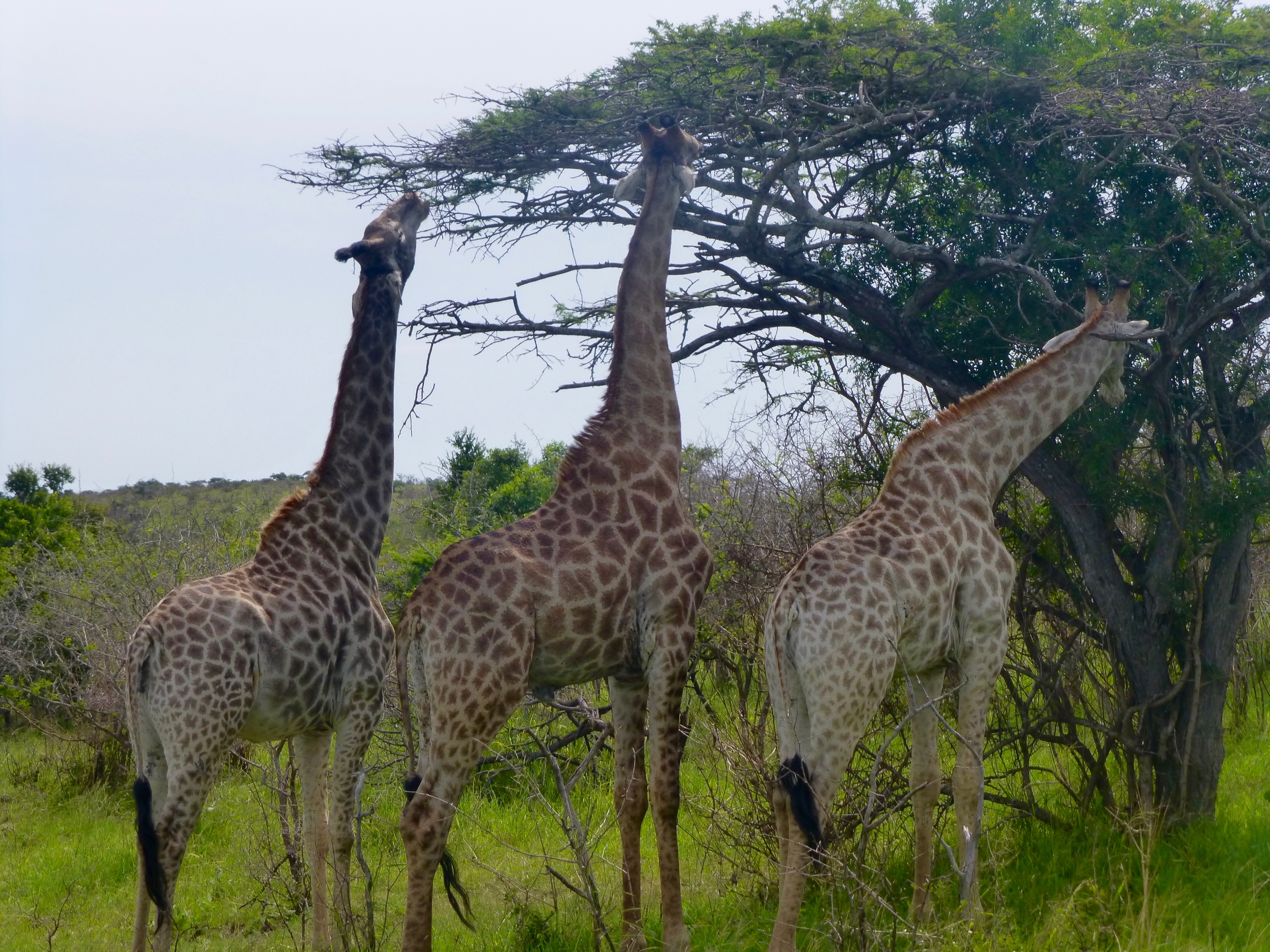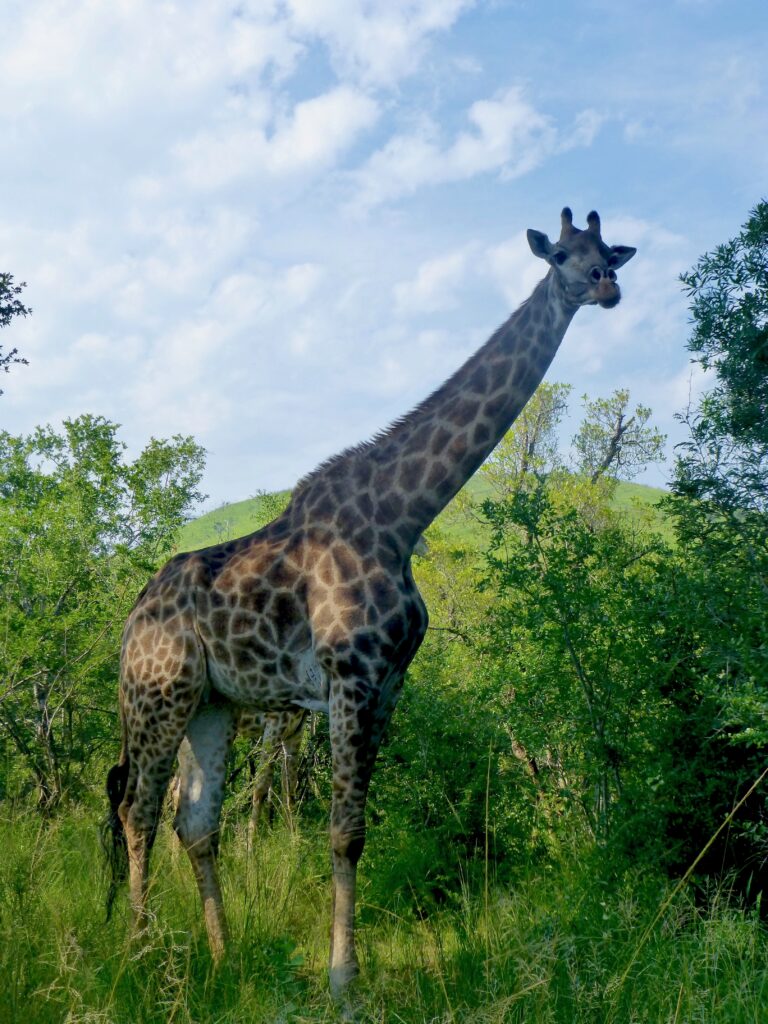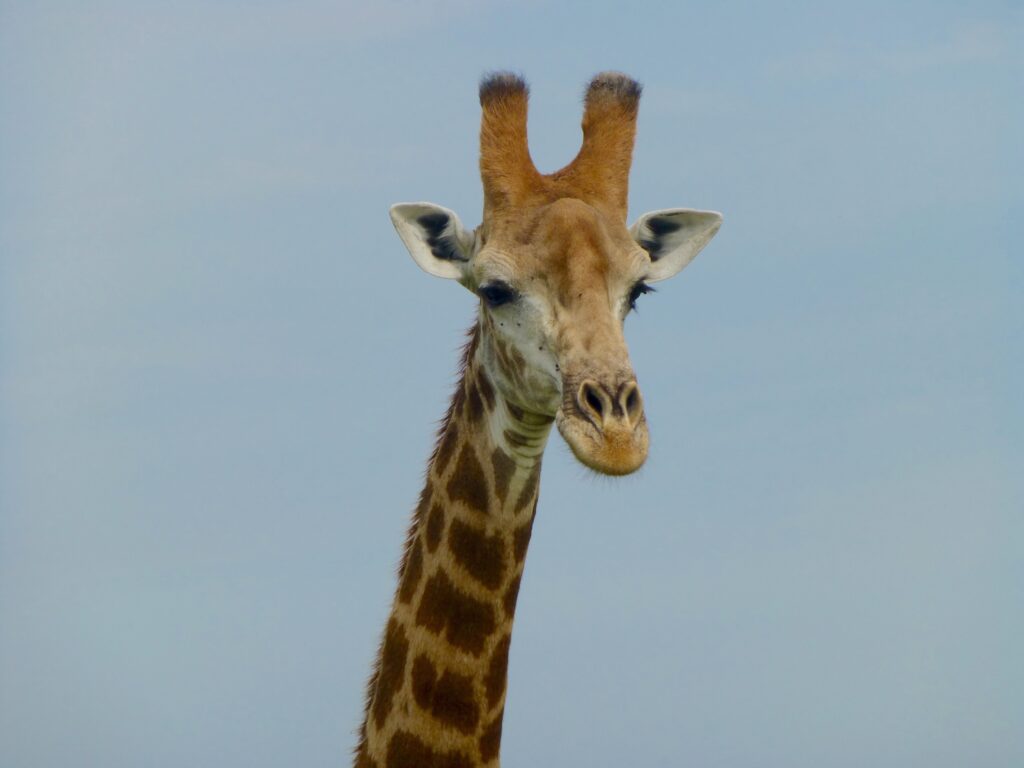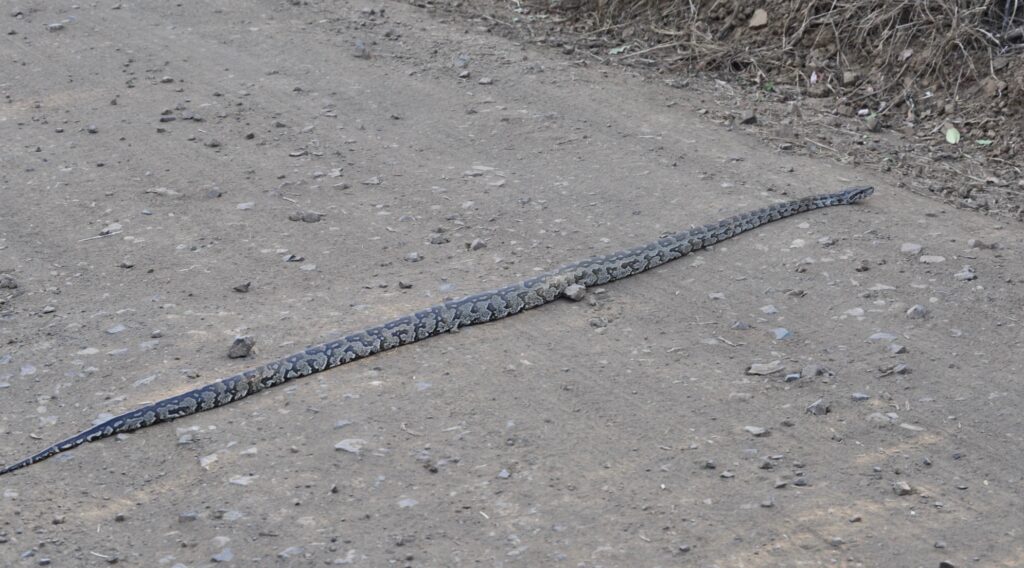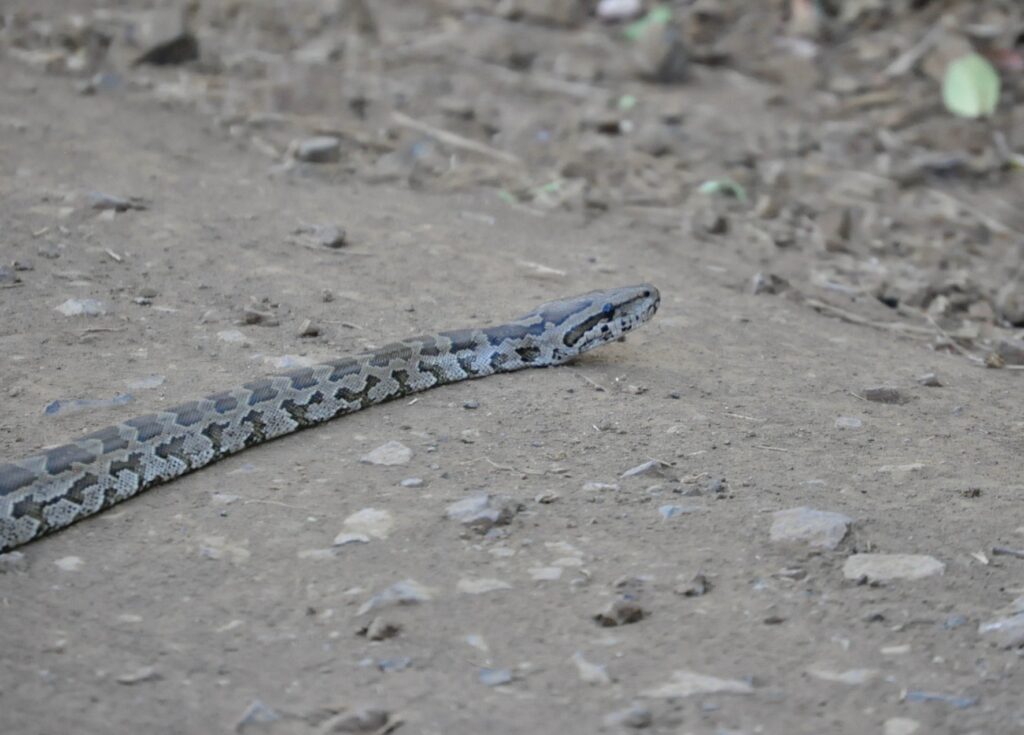HLUHLUWE-IMFOLOZI PARK – Formerly known as the Hluhluwe Umfolozi Game Reserve – is the oldest proclaimed reserve in Africa. Officially opened in 1895 as a Park. It is characterized by hilly topography and covers 960 square kilometers!
Hluhluwe-Imfolozi Park is known for its conservation efforts and rich wildlife. It is the only state-run park in Kwazulu Natal that is home to the BIG 5.
The north of the park has hilly topography with forests and grasslands and is known as the Hluhluwe area. It is more rugged and mountainous than the Umfolozi area in the south, near the Black and White Umfolozi rivers, which is primarily grasslands. The Umfolozi part – was previously used as King Shaka’s private hunting grounds.
The conservation efforts have contributed to this park having the largest population of White Rhino in the world. And it is definitely the game reserve we always see rhinos – often several times at one safari tour. Like here for instance – 2 white rhino by a dam.
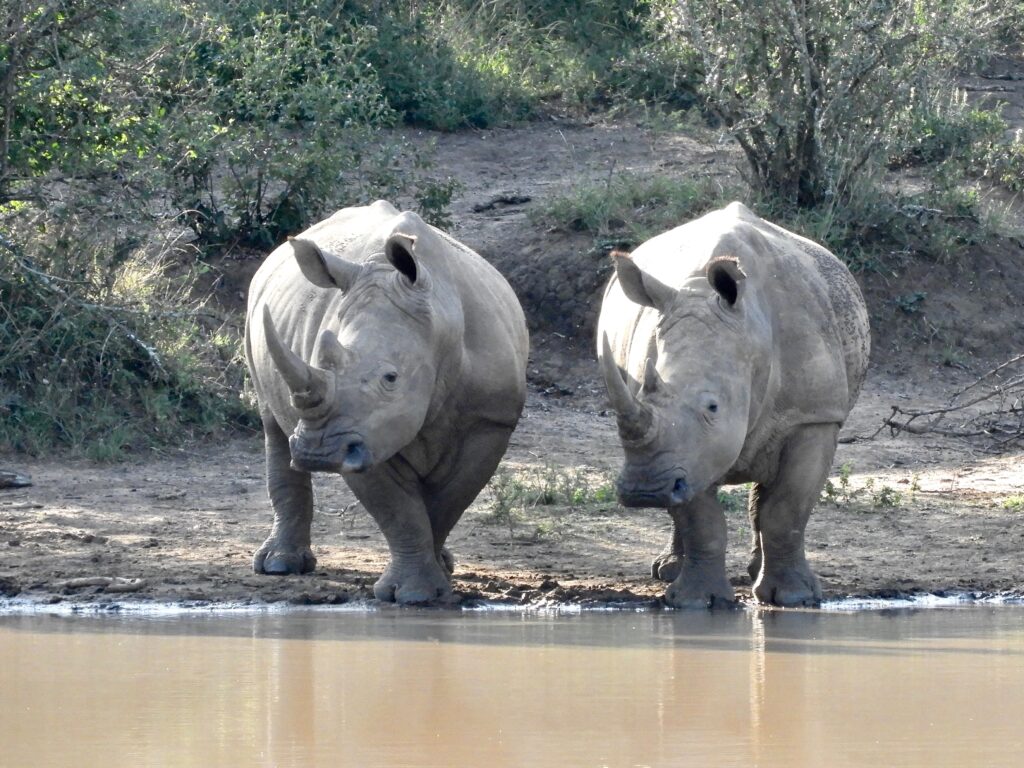
In this park you can also use the Wild Card – and get a free entrance. We usually by a Wild Card when we visit South Africa, even if it is just for a couple of weeks. The Wild Card is valid for one year and covers about 80 parks and reserves in South Africa ( International Cluster). It often pays of if you visit parks for more than a week.
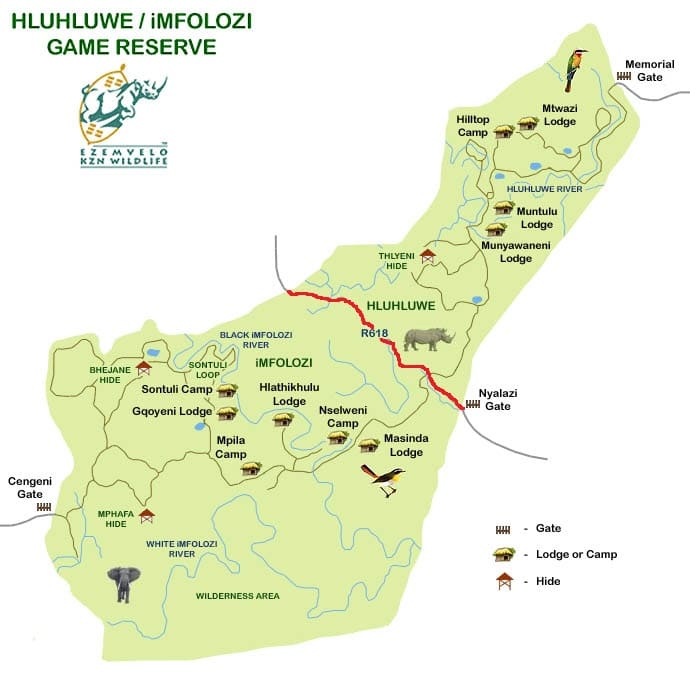
WILDLIFE
This game reserve is home to 86 species including the African Big 5, and some special wildlife include: Nyala, Nile Crocodile, Hippo, Giraffe, African Wild dog, Cheetah, Kudu, Impala, Bushpig, common Warthog, Hyena, Water Buck, Duiker, Blue Wildebeest, Jackal and up to 340 species of birds.

We have visited this park several times, often when going south after a visit to the Kruger National Park. We have seen 4 of the big5; rhinos, elephants and buffalo every time, and lions only once. We have never seen leopard.
Otherwise we have seen Zebras, Giraffes, Impala, Wildebeest and Nyala.
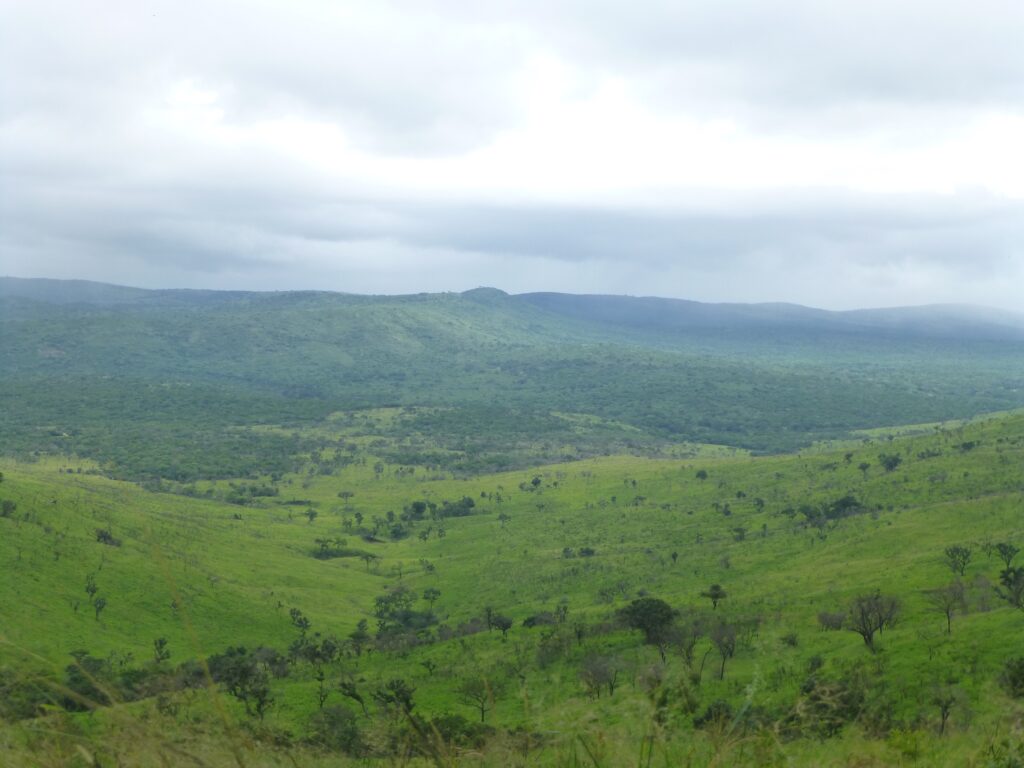
SAFARI
Both Hluhluwe and Umfolozi sections of the park are suited for self drives. There is only one main road that is tarred, stretching from Memorial Gate to about 6km (3.7mi) west of Mpila Camp. The rest of the roads are all gravel but in good condition. All roads, hides and loop roads are marked.
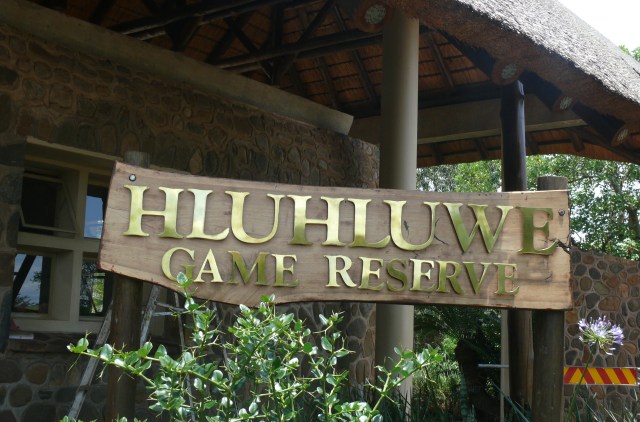
We have been most in the Hluhluwe section which offers hilly landscapes with incredible views, and several loops where we have seen many different kind of animals. There are severals picnic areas and also the nice Hilltop Camp with Restaurant. At Hilltop you can have both lunch and dinner – and you can stay over at one of the rondavels.
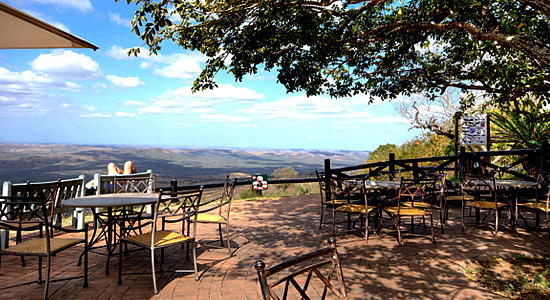
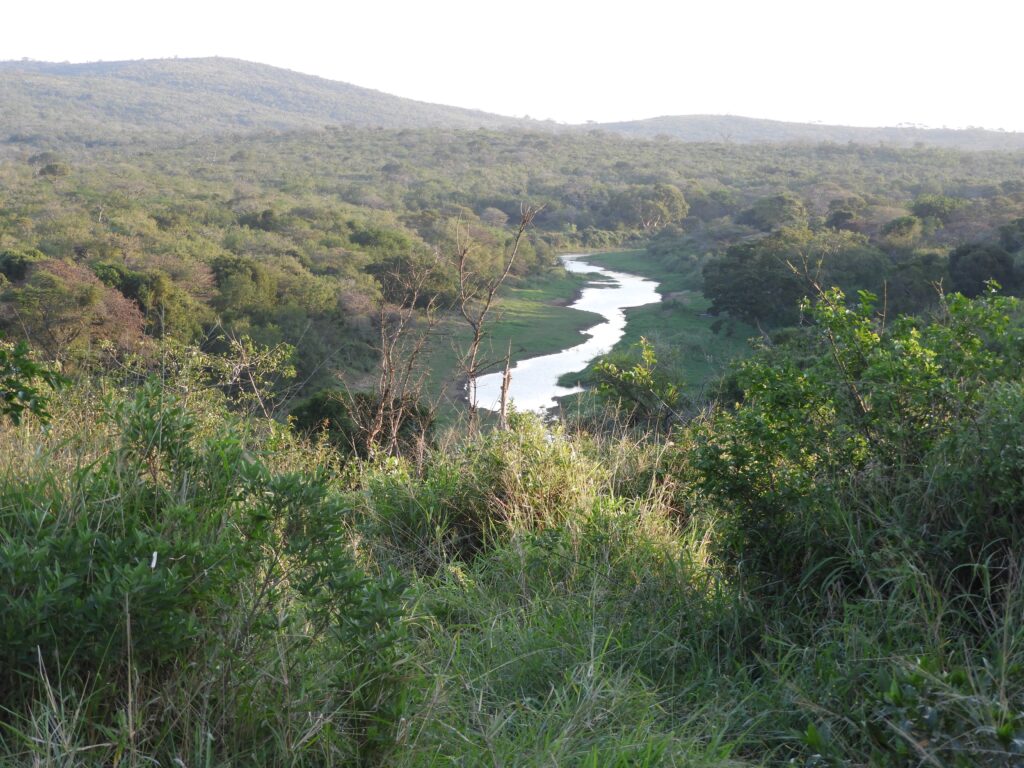
RHINOS
Some of our memorable moments with Rhinos:
Meeting with three rhinos – July 2014
It was a raining day – driving along the main road, south of the Hilltop camp. First we spotted the two rhinos in the bushes along the road. Then they crossed the road in front of us, and suddenly a third rhino came along..
Another meeting with three rhinos: At one of the gravel roads at a route off the main road – first two rhinos came out of the bushes – then another one came along. They had obviously been relaxing in a waterhole..
A special sight!
A meeting – with a lonely Rhino, Januar 2011. This was just before leaving the park, by the dam south of Memorial gate. The rhino was walking into the water and lay down by the waterside – it seemed like a long-awaited rest..
Elephant – close to the road
We have also seen many buffalo in this reserve, often big herds.
In fact – the African Buffalo spend most of the year in herds which can consist of up to 500! Gathering in such large groups helps dissuade predators like lions, leopards and hyenas.
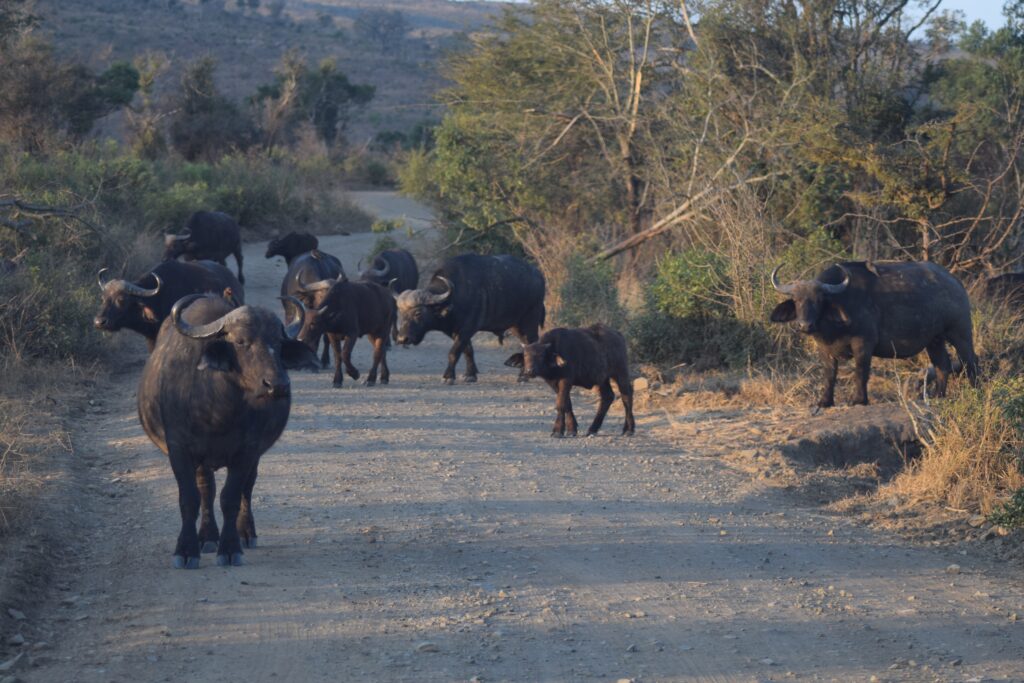
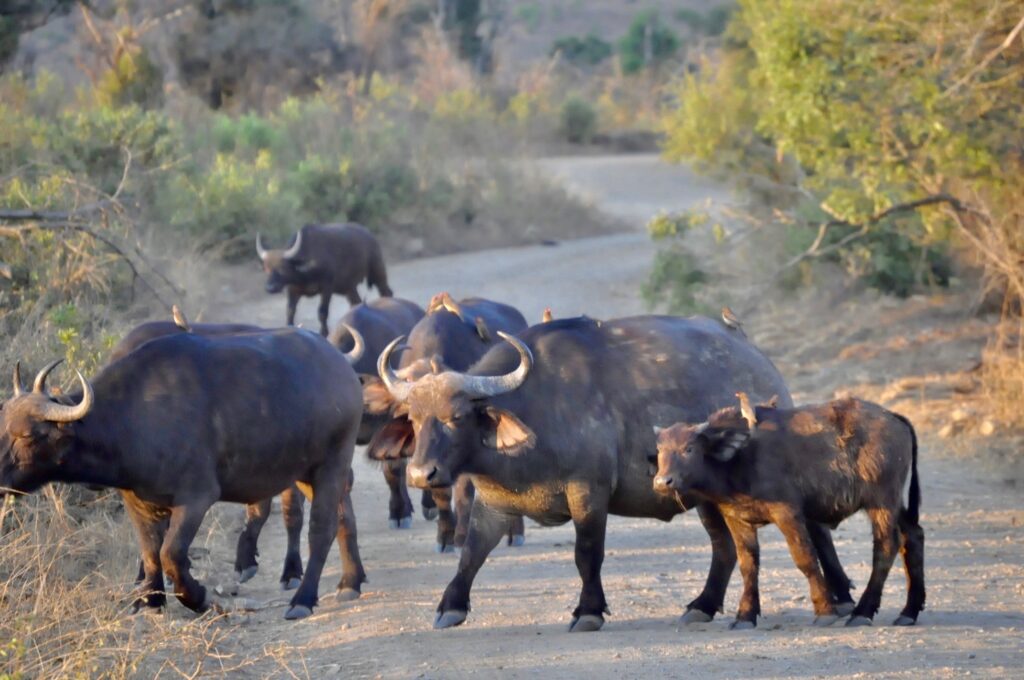
LIONS
As mentioned – we have often seen elephants, rhinos and buffalo – but not often lions. Only once – in July 2017.
We had an afternoon self drive safari – and spotted 2 lions lying on a gravel road. There were also another car present, we were watching the lions together. After a while the lions got up, and began to walk toward us, passed our car. They met some other male lions a distance away and were playing in an area of tall grass and shrubs – and then we did not see so much more of them.
ANTILOPES
Wildebeests or Gnus, are large African antelopes – closely related to cattle, goats and sheep. Gnus are in fact the largest of all antelopes. There are two species, black wildebeests and blue wildebeests, and this is the blue wildebeest which is also called common wildebeest.
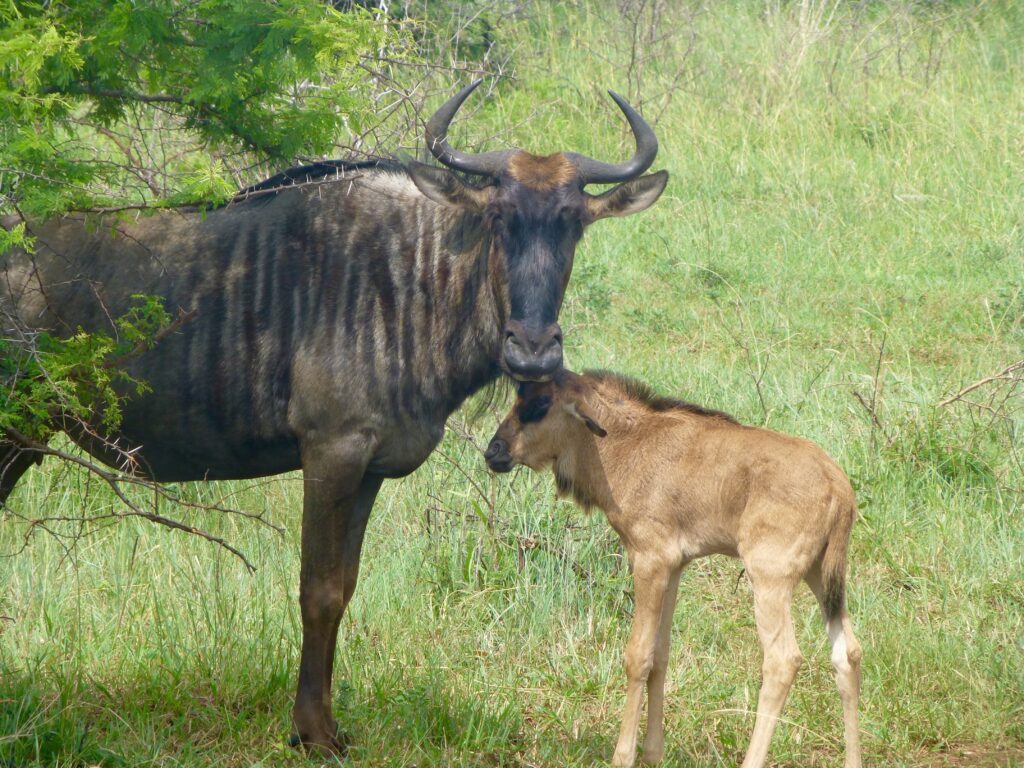
Blue wildebeest with calf
ANTILOPES –
NYALA
This is a rather shy antelope species which usually live deep within a woodland or forest. They will only emerge in the morning or afternoon to feed on reeds and grasses.
A characteristic feature of this species – is the difference between the males and the females. Females have short, bright chestnut coats with white stripes on the torso, spots and bands on the legs, chest, and cheeks, and males are almost double the size with coat turning dark charcoal gray and shaggy as they mature. Their stripes and spots mostly disappear under the long hair.
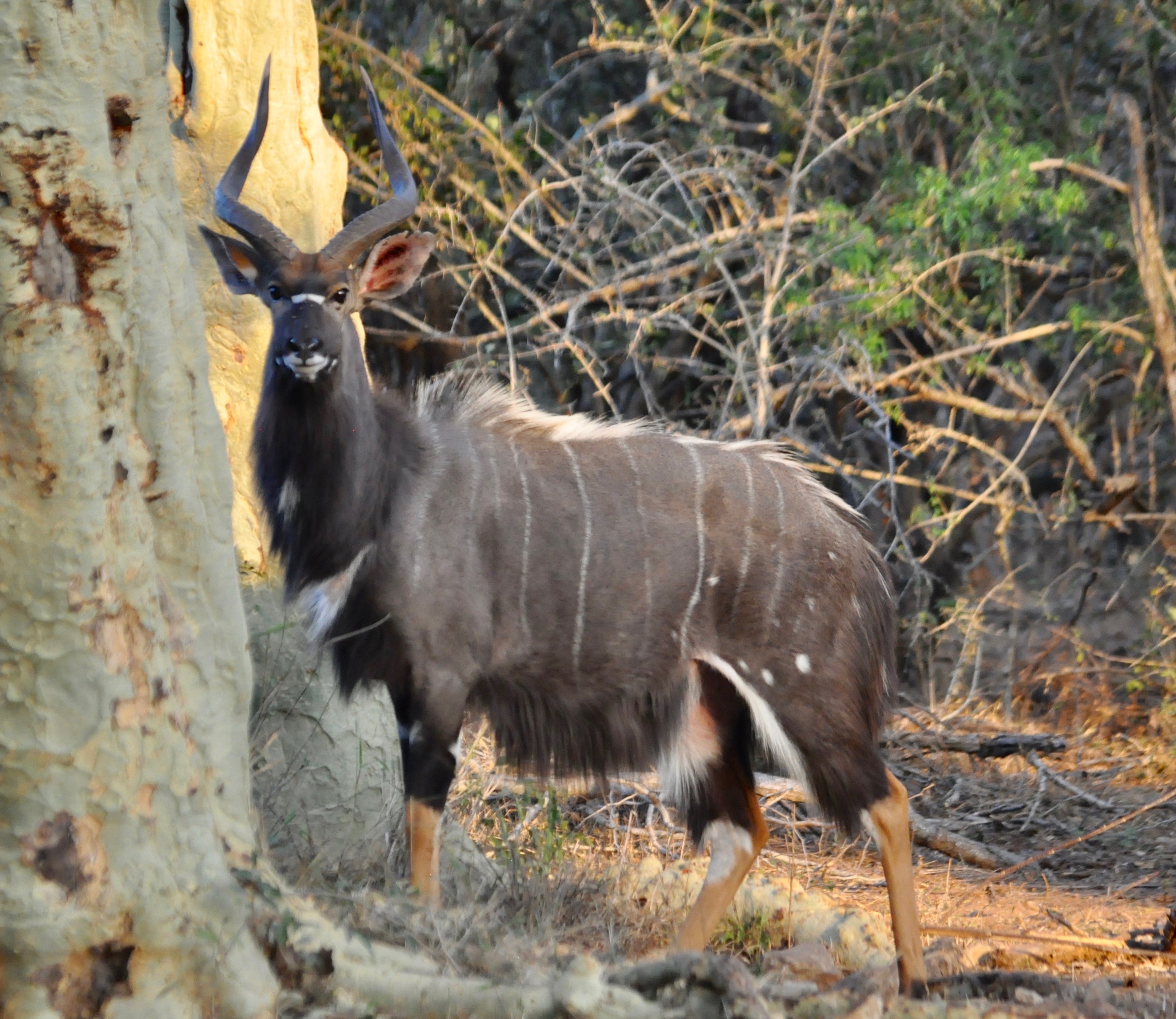
Male Nyala 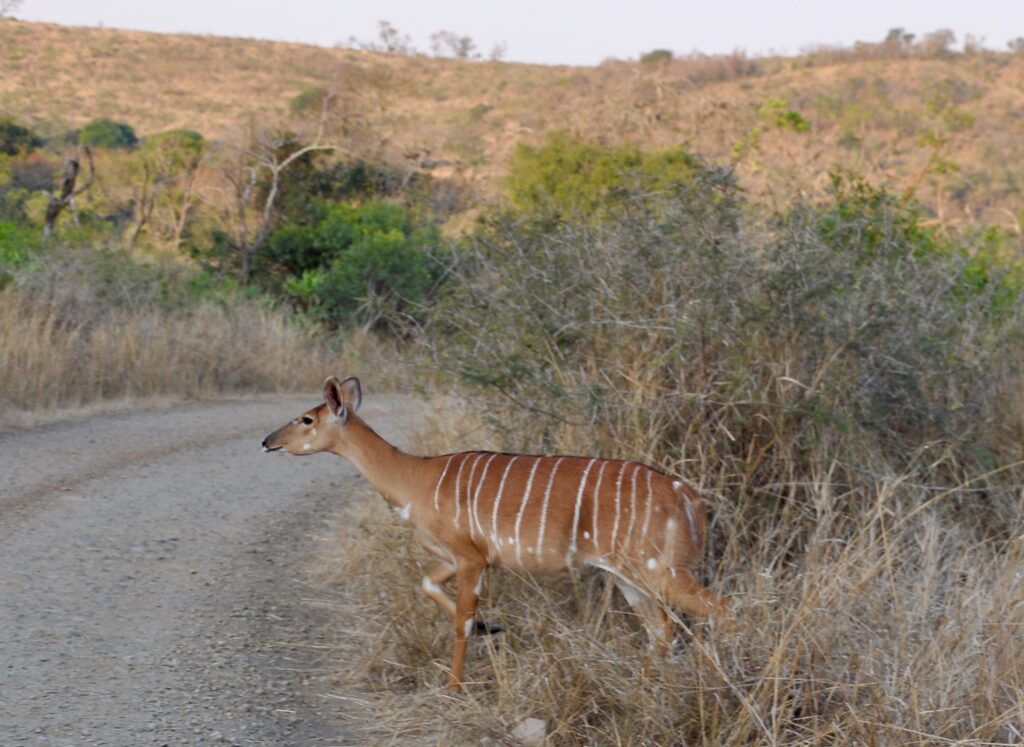
Female Nyala 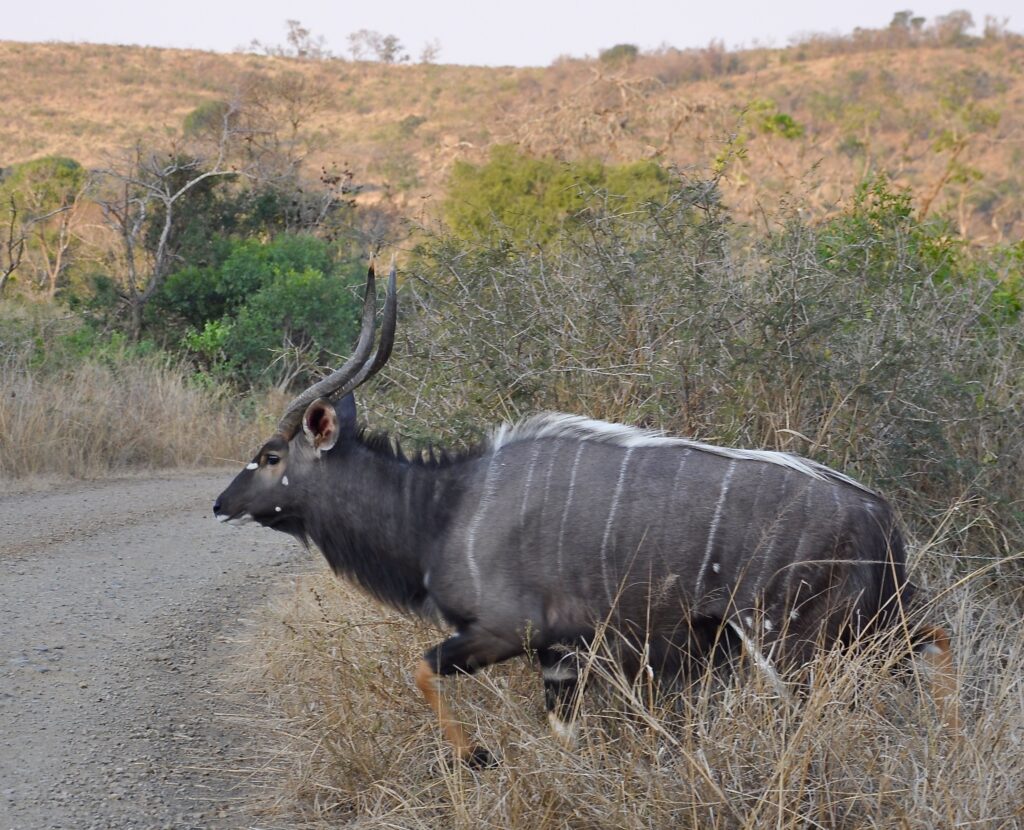
Male Nyala 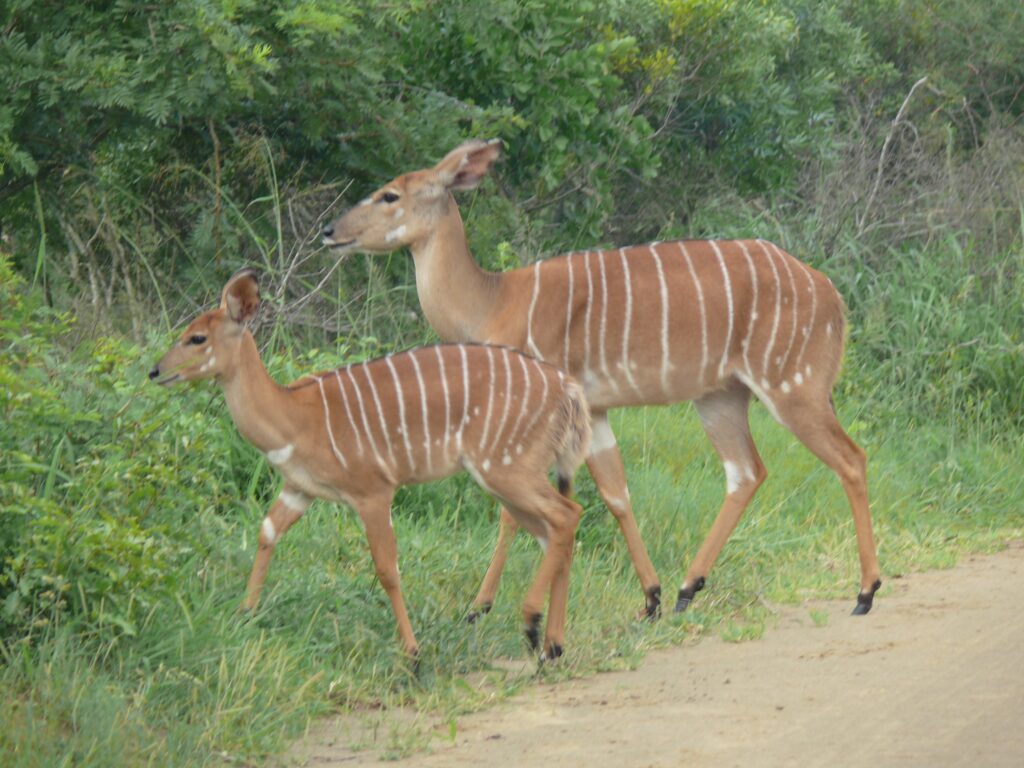
Female Nyala with child
Some of the beautiful giraffes we met in this reserve:
and some birds ..
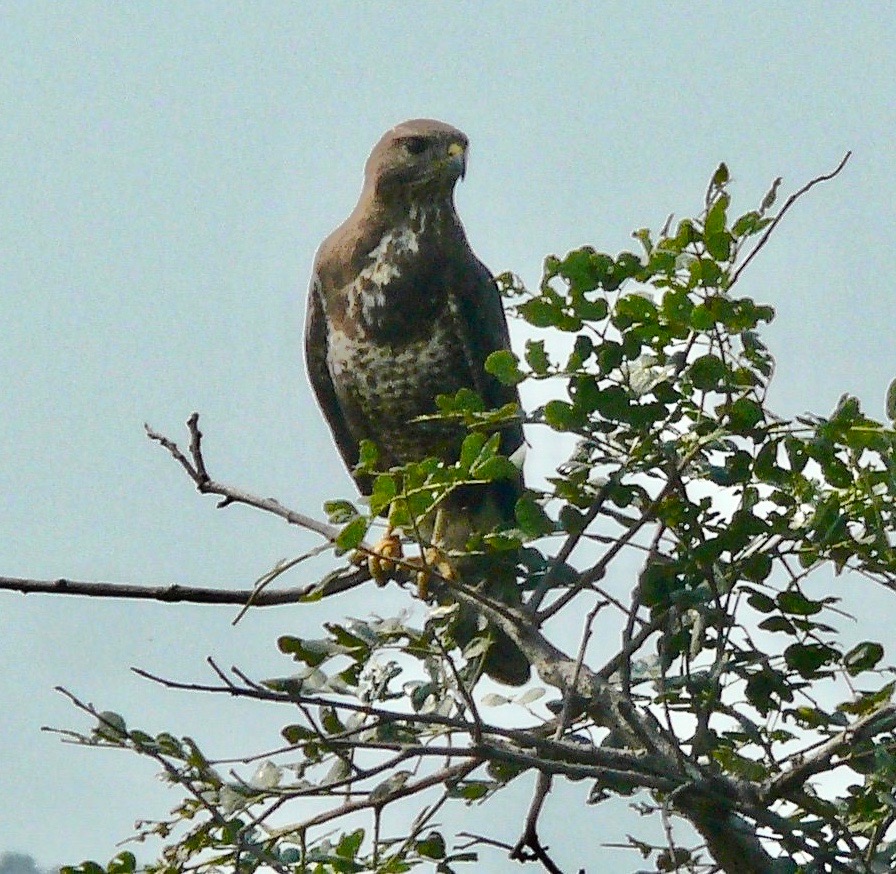
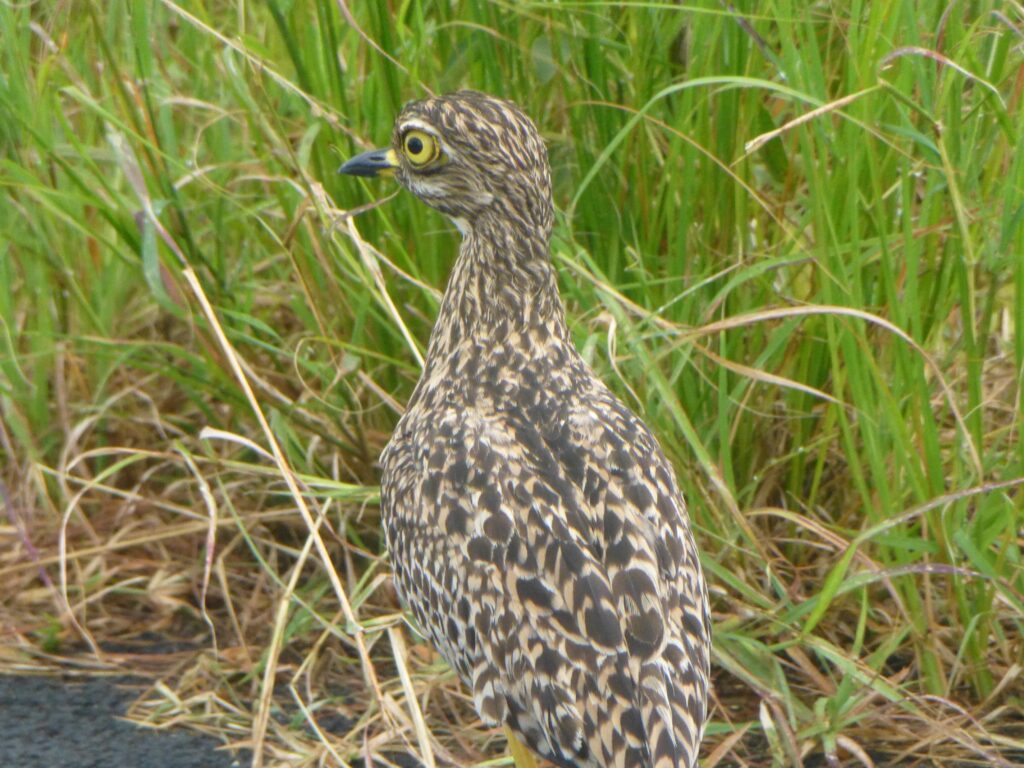
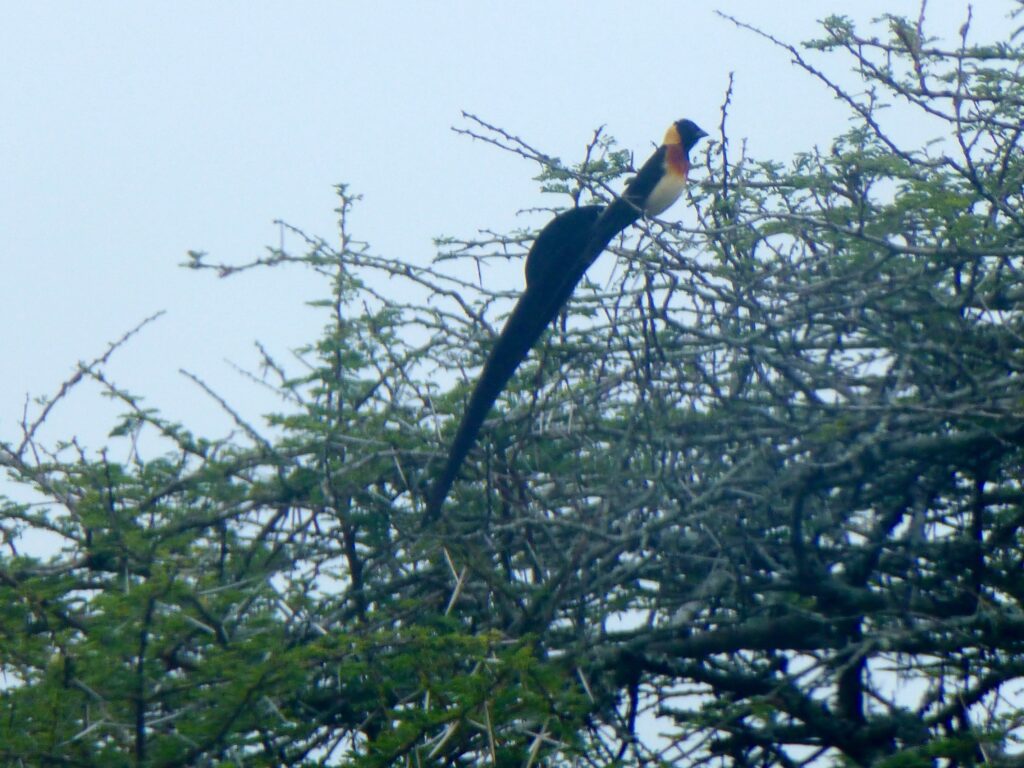
Long-Tailed Paradise Whydah
The Southern African Rock Pyton is the largest snake in South Africa, and can reach the length of max. 6,5m and weigh up to 55kg! This one we spotted at a visit in July 2015
We always visit The Hluhluwe Park when we are in the province of KwaZulu-Natal. Always good experiences – and we have had especially many exciting meetings with rhinos!
It is a convenient park to enjoy a safari, and I recommend a visit – be it a self drive or organized safari.
